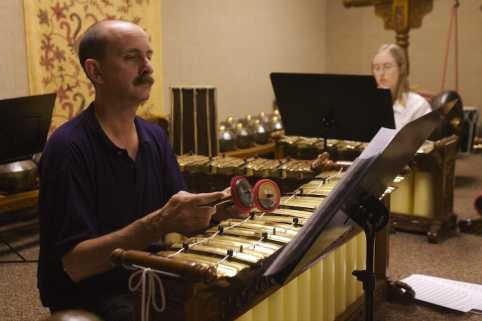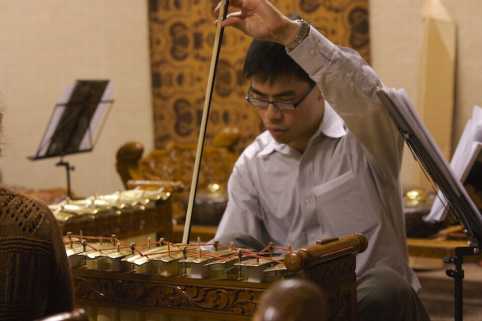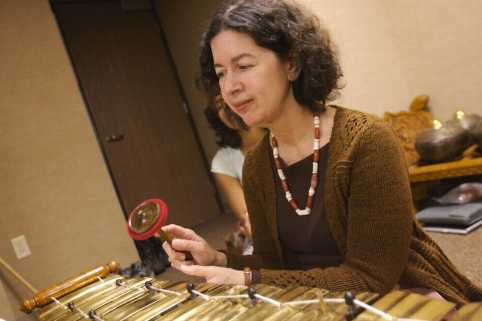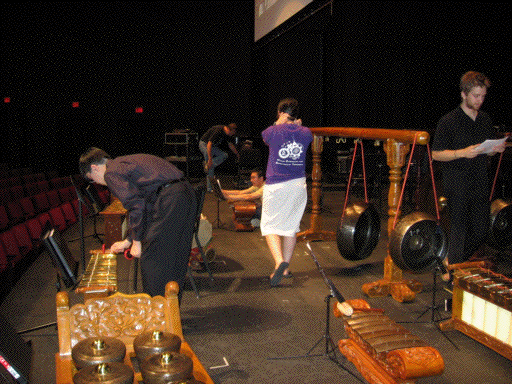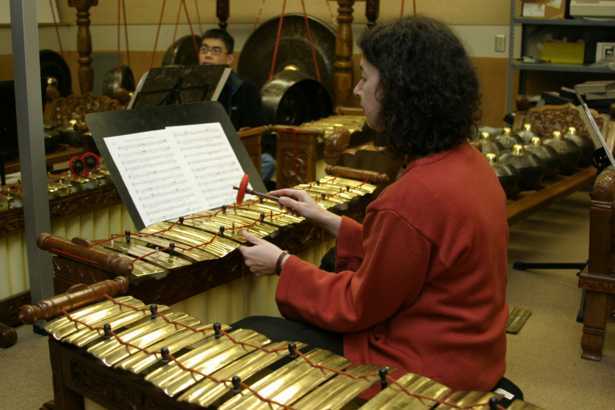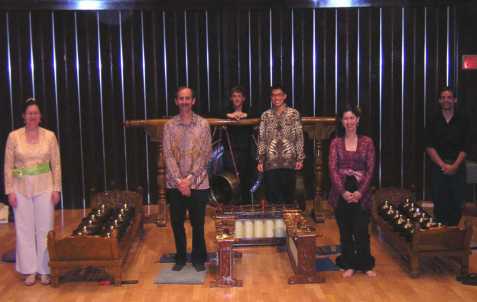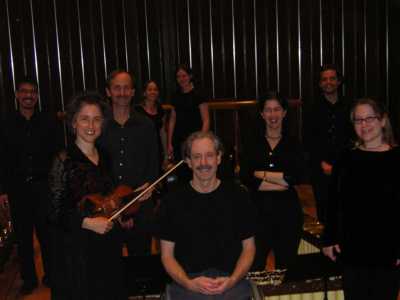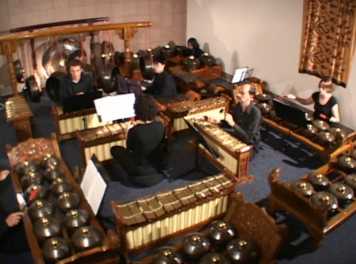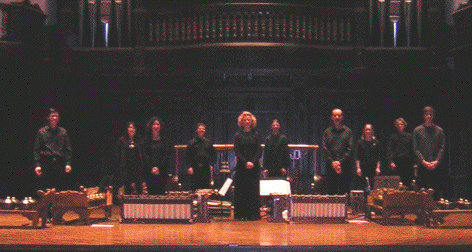The HMC American Gamelan

Director: Bill Alves
Photo Gallery:What is a gamelan?
A gamelan is a traditional orchestra from the islands of Java and Bali, Indonesia, made up mostly of metallophones (instruments of metal bars) and gongs. For hundreds of years, its luminous, bell-like sonorities have accompanied dance and drama, ritual and ceremony in villages and royal courts. The most famous type of gamelan plays the very refined and contemplative art music of Central Java, and its sound is often described as flowing water. In constrast, the gamelan music of Bali is more typically bright, dynamic, and fast, emphasizing precise community coordination and intricate interlocking parts.
What is an American gamelan?
The famous American composer Lou Harrison was entranced by the sound of the gamelan from the first time he heard it in the 1930s, and by the late 1960s was inspired to build his own version of the orchestra together with his partner Bill Colvig. They called this their "American gamelan." By then, a number of traditional gamelan were in use in the United States, mostly on the west coast, and beginning in 1974, Harrison had the opportunity to study with the Javanese master composer and musician K.P.H. Wasitodiningrat, familiarly known as Pak Cokro. Pak Cokro encouraged Harrison to compose new music for the traditional ensemble, and Harrison happily obliged, producing over 50 works before his death in 2003. His work as music's cultural ambassador inspired others to compose new American works for these instruments.
What is the HMC American gamelan?
After studing gamelan from books and recordings, I began playing with the UCLA gamelan in 1992. In 1993-94 I was a Fulbright scholar in Indonesia, where I had the opportunity to intensively study gamelan and to commission some instruments from the gamelan maker Suhirdjan of Yogyakarta, Java. Although they were made in Java, these instruments became the HMC American Gamelan, so named because, like Lou Harrison's American gamelan we play new compositions (so far all American) rather than traditional Javanese music.
HMC stands for Harvey Mudd College, of the Claremont Colleges in southern California, where the ensemble is now based. The HMC American Gamelan regularly performs at the Claremont Colleges and at MicroFest, the southern California festival of microtonal music. We have also performed with the Pacific Symphony as a part of their American Composers Festival at the Irvine Barclay Theater and at the Orange County Performing Arts Center.
How is the gamelan tuned?
Although the HMC American Gamelan consists of traditional Javanese instruments, the ensemble is unusual in several ways. Even though the tuning of the instruments falls into the traditional categories known as pelog (a seven-note scale) and slendro (a five-note scale), they are tuned to particular just intonation versions of those scales, a form of tuning based on harmonic ratios known as Just Intonation. For the specifics of these tunings, see my article called "Pleng: Composing for a Justly-Tuned Gender Barung."
Relevant links:
- Imbal-Imbalan, a CD featuring the HMC American Gamelan
- Por Gitaro, another CD with a performance by the HMC American Gamelan
- The American Gamelan Institute: The site includes gamelan recordings, scores, and videos for sale, an international directory of gamelan ensembles, and other important information
- The gamelan email list
- An interactive gamelan demonstration
- The first four photos above are by Kevin Mapp.









